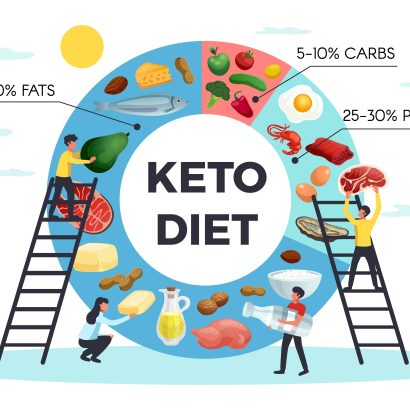If you have decided that transitioning to the keto diet is right for you, understanding the basics of the diet and how it affects your body is essential for a successful transition. The keto diet is classified as a low-carb, moderate-protein, and high-fat diet that has been studied for its potential weight-loss, disease-fighting, and energy-producing properties. The keto diet works by reducing the number of carbs that you eat, which for most people is about 20 to 50 g/day, and replacing them with healthy fats. This shift causes your body to start using fats as its main source of energy instead of glucose. This article will discuss the basics of the keto diet, provide a detailed transition plan, and provide helpful tips to make the transition easier.
When transitioning to the keto diet, it is important to understand the basics of the diet and what foods are allowed. The most important part of following the keto diet is reducing carbohydrate intake to 20-50g/day and replacing them with healthy fats. This means eating foods such as eggs, fish, chicken, beef, butter, avocados, and nuts is allowed while avoiding foods like bread, pasta, and certain fruits. Additionally, it is important to drink plenty of water throughout the day and get enough exercise to support the diet.
Once you understand the basics, it is important to create a transition plan. Start by gradually reducing your intake of carbohydrates over a period of two weeks and heavily emphasizing healthy fats in their place. Try to plan your meals one week at a time, keeping track of the grams of carbohydrates that you are eating and the number of healthy fats that you are getting from food. During this transition, it is important to monitor your body and how it is responding. If you stop losing weight or start feeling ill, consider increasing your carb intake slightly or adding more healthy fats.
Ultimately, transitioning to the keto diet does not need to be difficult with the right planning and information. To make the transition easier, try to stay motivated with the help of a friend or health coach. Additionally, have healthy snacks on hand and look for easy recipes that you can prepare in advance. Finally, give yourself time to adjust to the diet and don’t be too hard on yourself if you go off the diet occasionally or make mistakes.
By following the steps outlined in this article and keeping the basic principles of the keto diet in mind, you can successfully transition from an old-school diet to the keto diet.
How long does it take to transition to keto?
The transition to a ketogenic diet typically takes 2–4 days, but in some cases, it can take up to several weeks. To begin, individuals should gradually reduce their carbohydrate intake while increasing their fat intake and eating more healthy proteins. It is important to maintain a consistent nutritious meal plan during this period, as well as track the number of carbohydrates consumed, in order to effectively reach and sustain ketosis. During the first week, individuals commonly experience an array of symptoms including fatigue, dizziness, cravings, and poor concentration as their body adjusts to its new metabolism. However, these conditions typically pass within 1-2 weeks and may be alleviated through proper hydration, rest, and supplementation with electrolytes, omega-3s and probiotics.

Get your custom keto meal plan
What’s your main health goal?


